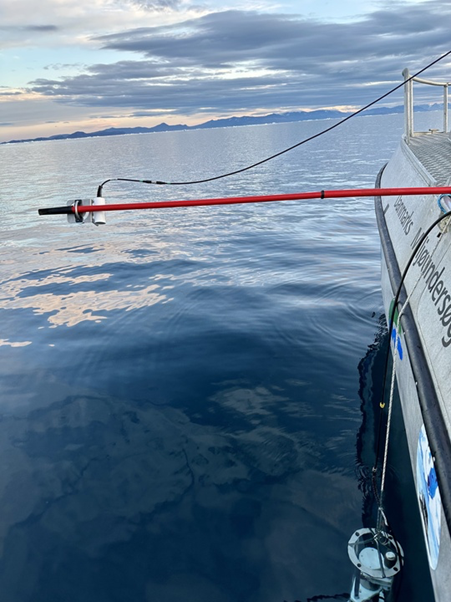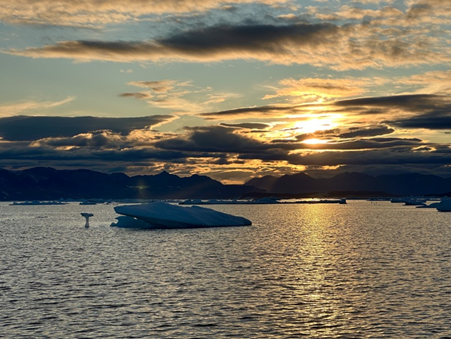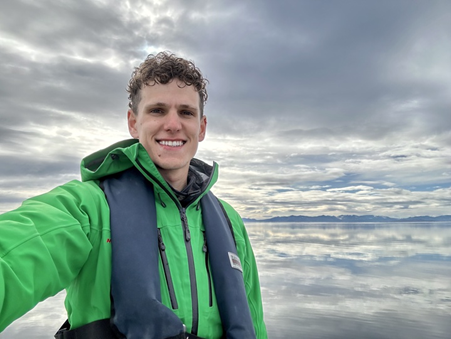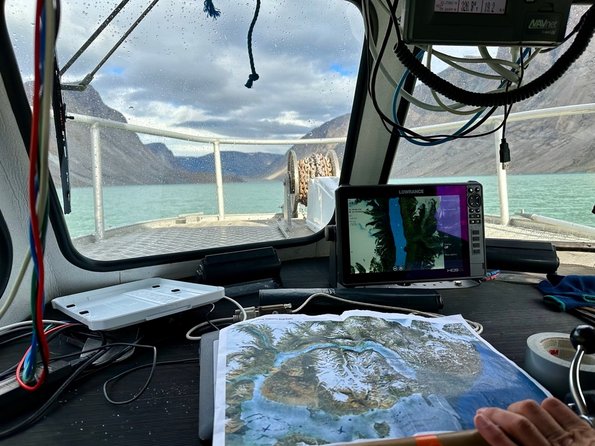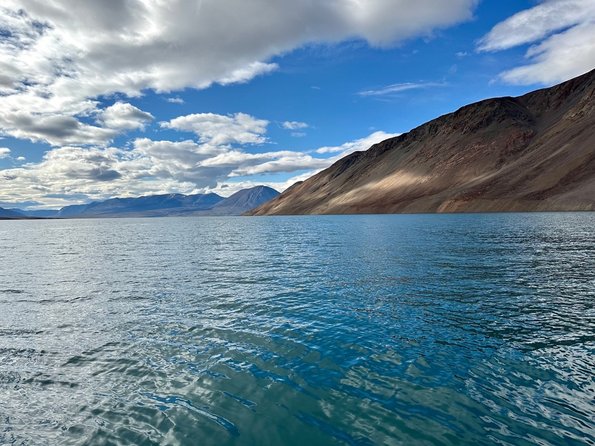Two young scientists share their experiences doing fieldwork in remote Northeast Greenland, check out their blog
Life on the water
Work in the field has ramped up quickly. Seventy-two hours after getting the boat into the water we have already sampled two of the Greenland Ecosystem Monitoring (GEM- https://g-e-m.dk) Marine Basis stations, and done CTD casts from inner Tyroler fjord all the way out into the Greenland Sea. This means I have been out on the boat a fair amount, actually I’ve been on the boat more than I have been sleeping! It is best that we conduct CTD casts from all stations on the same day so we can examine the distribution of water masses before they change. I tagged along on both shifts of this long day to measure bulk CO2 fluxes. I have measured the pCO2 of the surface water as well as surface salinity and temperature while either Mikael or Mie conducted the CTD casts.
In order to study the impact of freshening (fresh water input) on marine carbon uptake we are making a transect along a gradient from the freshwater input of the Tyroler river out to the Greenland Sea. On our first sail deep into Tyroler fjord I could notice the visible gradient from the clear blue of marine-dominated water to the aquamarine Tyroler fjord water milky with glacial sediment. Rising from the water, the fjord is surrounded by colossal red-tinged mountains. The landscape is much more barren here than around Nuuk (my only other reference of Greenland) up here in the high Arctic. As we sailed by I couldn’t help but wonder if any human has ever set foot on this or that mountain up in this corner of the world?
Despite the long hours on the boat and the sample processing in the lab, I have been having a blast! I can’t believe I am finally here in Young Sound, NE Greenland – a place I have read and dreamed so much about. As this is my first field season as a PhD student, I can also feel a shift that comes with having this new position. It is a wondrous, yet daunting new experience for me to be in charge of planning and running my own experiments. Additionally, my relationships with some of the other scientists here have also changed from student-lecturer to colleague-colleague. I have been relishing the opportunity that boat time and long summer days provide to get to know everyone better as individuals. It is a special time here in the field where the rest of the world falls away and you are left with a small cohort of passionate people trying to discover more about how this world works and how it is changing.
